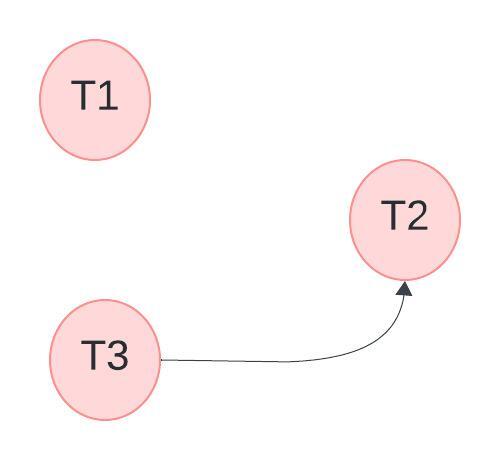
$\begin{array}{c|c|c} \hline
\bf{T_1} & \bf{T_2}& \bf{T_3} \\ \hline
r_1(z)\\
w_1(z) \\
&r_2(x) \\
&&r_3(y) \\
&&w_3(y) \\
&r_2(y)\\ &w_2(x)\\ &w_2(y)\\ \hline
\end{array}$
The corresponding polygraph for the given transaction. it has three conflict pairs as $T_3\rightarrow T_2$ as $r_3(y)\rightarrow w_2(y),w_3(y)\rightarrow r_2(y),w_3(y)\rightarrow w_2(y)$.
Because the graph is acyclic it is CSS and its corresponding conflict equal schedule is based on the topological order of the given graph.
Therefore it's correct TS sequences are:
- $T_1,T_3,T_2$
- $T_3,T_1,T_2$
- $T_3,T_2,T_1$
Option $(B, C, D)$ are correct.